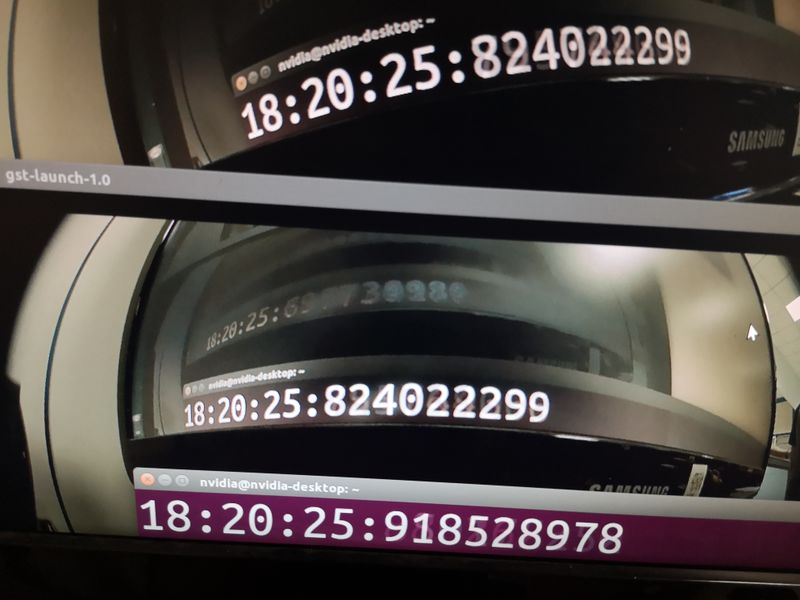Difference between revisions of "FPD-Link III Virtual Channel ID"
m |
|||
| Line 1: | Line 1: | ||
= Introduction = | = Introduction = | ||
| − | The [http://www.ti.com/lit/an/slyt581/slyt581. | + | The [http://www.ti.com/lit/an/slyt581/slyt581.pdf Flat Panel Display Link III ] is an interface used in automotive applications to transport video from point to point. This interface enables |
the transport of high-definition digital video, as well as a bidirectional control channel, over a low-cost cable, either twisted pair or coax. | the transport of high-definition digital video, as well as a bidirectional control channel, over a low-cost cable, either twisted pair or coax. | ||
Not long ago, cameras were a novel feature in an automobile, mostly used in larger vehicles to aid in seeing behind the vehicle while backing up. Today, backup cameras are included even in low-cost, sub-compact cars. As automobiles develop, there will be more and more applications for cameras in the vehicle, and the cameras will become more and more sophisticated. | Not long ago, cameras were a novel feature in an automobile, mostly used in larger vehicles to aid in seeing behind the vehicle while backing up. Today, backup cameras are included even in low-cost, sub-compact cars. As automobiles develop, there will be more and more applications for cameras in the vehicle, and the cameras will become more and more sophisticated. | ||
Revision as of 21:53, 31 August 2019
Contents
Introduction
The Flat Panel Display Link III is an interface used in automotive applications to transport video from point to point. This interface enables the transport of high-definition digital video, as well as a bidirectional control channel, over a low-cost cable, either twisted pair or coax. Not long ago, cameras were a novel feature in an automobile, mostly used in larger vehicles to aid in seeing behind the vehicle while backing up. Today, backup cameras are included even in low-cost, sub-compact cars. As automobiles develop, there will be more and more applications for cameras in the vehicle, and the cameras will become more and more sophisticated.
Applications:
- Automotive ADAS
- Rear View Cameras (RVC)
- Surround View Systems (SVS)
- Camera Monitoring Systems (CMS)
- Forward Vision Cameras (FC)
- Driver Monitoring Systems (DMS)
- Sensor Fusion
- Security and Surveillance
Virtual Channel ID
The FPD Link III Interface is able to manage up to 4 cameras with virtual channels as separate streams. The DS90UB960-Q1 chip includes four FPD-Link III inputs simultaneously from DS90UB953-Q1 serializers. Data received from the four input ports is aggregated onto one or two 4-lane CSI-2 interfaces. The CSI-2 TX supports up to four concurrent virtual channels. For each FPD-Link III input port, separate mapping may be done for each input VC-ID to any of the four VC-ID values.
The MIPI CSI-2 protocol transports virtual channels to separate different data flows interleaved in the same data stream. This function sends the output as a time-multiplexed CSI-2 stream, where the video sources are differentiated by the virtual channel.
Synchronization
The frame synchronization can be set through an external signal or internally generated by the deserializer. FrameSync signaling on the four back channels is synchronous. Thus, the FrameSync signal arrives at each of the four serializers with limited skew.
GStreamer Examples
FPD Link III DS90UB960 DS90UB953 - IMX390
The following pipelines were tested using a Jetson AGX Xavier
- Capture and display (1936x1100@60 fps)
gst-launch-1.0 nvarguscamerasrc sensor-id=0 wbmode=0 maxperf=true aelock=true awblock=true ! nvvidconv ! queue ! xvimagesink sync=false
- Recording H.264 (1936x1100@60 fps)
gst-launch-1.0 nvarguscamerasrc sensor-id=0 wbmode=0 maxperf=true aelock=true awblock=true ! queue ! omxh264enc ! mpegtsmux ! filesink location=gstreamer_test.ts -e
Demonstration
Example Pipeline using 2 cameras on Nvidia Xavier
gst-launch-1.0 nvarguscamerasrc sensor-id=0 wbmode=0 maxperf=true aelock=true awblock=true ! nvvidconv ! videoconvert ! queue ! xvimagesink sync=false nvarguscamerasrc sensor-id=1 wbmode=0 maxperf=true aelock=true awblock=true ! nvvidconv ! videoconvert ! queue ! xvimagesink sync=false
| Format | Mean ARM Load (%) | FPS (Hz) |
|---|---|---|
| 1936x1100@60 | 45.1 | 60.03 |
16 Simultaneous Cameras on Nvidia Xavier
The following configuration was done using 4 virtual channels on 4 CSI ports from Nvidia Xavier.
Glass to glass latency
Mean glass to glass latency: 123 ms
Linux Drivers
Ridgerun has developed Linux drivers for FPD Link III based systems, this drivers now have support for MIPI CSI-2 virtual channel. If you are interested in our FPD Link III SERDES Linux Drivers, please visit the following page: [DS90UB960/953 FPD Link III SERDES Linux Drivers] or feel free to contact us.
Contact Us
Please visit our Main Website for the RidgeRun online store or Contact Us for pricing information of the engineering support and services.
You can also send an email to support@ridgerun.com for technical support, more information about the features or for a evaluation version (if available).


